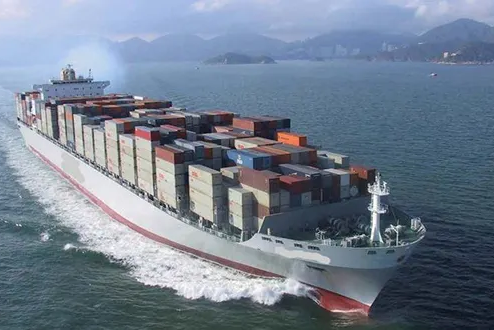Ang pagpapaloob ng bente ay ang pugad ng pandaigdigang kalakalan, nagbibigay-daan sa mabilis at ligtas na pag-uukoy ng mga produkto sa buong mundo. Sa patuloy na pagtaas ng demand para sa pandaigdigang kalakalan, kinakailangan ng mga negosyo na maintindihan ang mga detalye ng pagpapaloob ng bente upang makabuo ng pinakamainam na operasyon ng lohistik. Iniaaral ng artikulong ito ang mga pinakamainam na praktika at pangunahing pagsusuri para sa paggawa ng pinakamataas na epekibo sa pagpapaloob ng bente.
Pag-unawa sa Pagpapaloob ng Bente
Ang pag-sipping ng container ay nagtutulak ng mga produkto gamit ang malalaking, pinansihong mga container. Ang mga container na ito ay dating sa iba't ibang sukat, na ang pinakamahalaga ay ang 20-foot at 40-foot containers. Ang pagsasakatuparan ay nagbibigay-daan para sa walang siklab na pagpapalipat sa pagitan ng mga barko, kotse, at tren, gumagawa ito ng isang mapagpalibot at epektibong paraan ng transportasyon.
Pangunahing Benepisyo ng Pag-sipping ng Container
Epektibidad: Ang mga container ay disenyo para sa madaling pagproseso at paghahamon, na nagdudulot ng mas mabilis na pagloload at pag-unload sa mga port. Ang epektibidad na ito ay nagdadala ng mas mabilis na panahon ng pag-uwi at bawas na gastos.
Seguridad: Ang mga produkto na inilalakad sa loob ng mga container ay mas kaunti ang susceptible sa pinsala at pagnanakaw. Ang matibay na konstraksyon ng mga container ay nagbibigay ng mahusay na proteksyon laban sa mga elemento at potensyal na pagnanakaw.
Kosteng-bikta: Ang pag-sipping ng container ay pangkalahatan ay mas kosteng-bikta kaysa sa iba pang mga paraan ng transportasyon, lalo na para sa mga internasyonal na pag-uwi mula malayo. Ang kakayahan na mag-consolidate ng maraming pag-uwi sa isang container ay patuloy na bumabawas sa mga gastos.
Kababalaghan: Maaaring dalhin ng mga konteynero ang isang malawak na uri ng mga produkto, mula sa mga row materials at makinarya hanggang sa perishable items at tapos na produkto. Ang mga specialized containers, tulad ng refrigerated units (reefers), ay nag-aalok para sa mga specific needs tulad ng temperature control.
Mga Pinakamainam na Patakaran sa Pagpaparipara ng Konteynero
Pumili ng Tamang Uri ng Konteynero
Ang pagpili ng wastong uri ng konteynero ay mahalaga upang mapatuloy ang ligtas at epektibong transportasyon ng mga produkto. Ang standard dry containers aykop para sa karamihan ng uri ng cargo, ngunit dapat tingnan ng mga negosyo ang mga specialized containers para sa mga espesyal na pangangailangan:
Refrigerated Containers (Reefers): Para sa perishable goods na kailangan ng temperature control.
Open-Top Containers: Para sa oversized cargo na hindi maaring pasukin sa isang ordinaryong konteynero.
Flat Rack Containers: Para sa mga mabilis at malaking item tulad ng makinarya at sasakyan.
Optimize Container Utilization
Ang pagsusuri ng gamit ng available space sa loob ng isang konteynero ay maaaring mabawasan ang shipping costs. Dapat gawin ng mga negosyo:
I-ayos at I-stak ng Tama ang Mga Produkto: Siguraduhin na ang mga produkto ay maingat na iniimbak upang maiwasan ang pagkilos habang nasa pagsisikad.
Gumamit ng Pallets at Skids: Suportahan ang madaling paghahandle at mabuting paggamit ng puwang.
Balanseng Pagdistribute ng Timbangan: Magbigay ng patas na timbang para sa katatagan at maiwasan ang pinsala.
Ilapat ang Nakakabago na mga Sistema ng Pag-susuri
Ang real-time na pagsubaybay at pagsusuri ng mga shipment ay nagbibigay ng mahalagang kaalaman at nagpapabilis ng transparensya sa buong proseso ng pagpapadala. Nag-ooffer ang mga advanced tracking systems ng:
Real-Time na Update ng Lokasyon: Alamin ng mga negosyo ang lokasyon at kalagayan ng kanilang mga padala.
Pagsusuri ng Katayuan: Siguraduhing ang mga temperature-sensitive na produkto ay nananatili sa kinakailangantang saklaw.
Predictive Analytics: Hulaan ang mga posibleng pagdadalaga at optimisahan ang mga ruta para sa mas mabilis na paghahatid.
Siguraduhing Sumusunod sa mga Batas
Kailangan ang sumusunod sa mga pandaigdigang batas ng pagpapadala upang maiwasan ang mga pagdadalaga at parusa. Dapat gumawa ng:
Magpigil sa Pagkaalam tungkol sa mga Batas ng Kalakalan: Siguraduhin na up-to-date ka sa mga batas ng import/export at mga kinakailangang kusog para sa bawat destinasyon.
Handaing Tumpak na Dokumentasyon: Siguraduhin na lahat ng kinakailangang dokumento, tulad ng mga bill of lading, sertipikasyong pinagmulan, at mga pahayag ng customs, ay tumpak na punan at ipapasa nang kapanahon.
Gumawa ng Trabaho kasama ang Makakaramdam na Customs Brokers: Palawakin ang maayos na pagtanggal ng customs at minimisahin ang panganib ng mga isyu sa pagsunod-sunod.
Paggamit ng Teknolohiya para sa Pinakamataas na Epektibidad
Naglalaro ang teknolohiya ng isang kritikal na papel sa optimisasyon ng mga operasyon ng container shipping. Dapat mag-adopt ang mga negosyo:
Software para sa Paggamot ng Pagdadala: Streamline ang mga proseso ng pag-book, dokumentasyon, at pag-track.
Automatikong Sistemang Pagproseso ng Kargo: Bilisan ang mga operasyon ng pag-load at pag-unload sa mga port.
Teknolohiyang Blockchain: Palakasin ang transparensya at seguridad sa supply chain sa pamamagitan ng pagbibigay ng isang hindi maaalis na rekord ng mga transaksyon at galaw.
Mga Punong Talakayan para sa Container Shipping
Pamamahala ng Gastos
Maaaring maimpaktong mabuti ang mga gastos sa pagdadala sa ibaba ng isang negosyong pangkalahatan. Kasama sa mga pangunahing estratehiya para sa pamamahala ng mga gastos ay:
Pag-uugnay ng mga Pagdadala: I-combine ang maraming pagdadala sa isang konteynero upang makabuo ng mga economies of scale.
Pagsusulit ng Mga Kontrata: Siguraduhin ang paborableng rate at termino kasama ang mga shipping lines at freight forwarders.
Pag-optimize ng mga Route: Pumili ng pinakaepektibong at pinakamura na mga route upang minimizahin ang mga oras ng transito at bawasan ang paggamit ng fuel.
Pamamahala ng Panganib
Ang pamamahala ng mga panganib na nauugnay sa container shipping ay mahalagang gawin upang siguruhing ligtas at maayos na ipadala ang mga produkto. Isipin ang mga sumusunod:
Kakublang Pamamahala: Protektahan laban sa mga posibleng
pagkawala dahil sa pinsala, pagnanakaw, o pagdelya.
Pagsasaayos ng Kontingensiya: Magdesisyon ng mga plano upang tugunan ang hindi inaasahang mga pagbago, tulad ng mga strike sa port o mga pribisyong pangkalikasan.
Regularyong Audit: Gawan ng audit ang mga proseso ng pagdadala at mga partner upang tukuyin at bawasan ang mga panganib.
Mga Praktis ng Susustabilidad
Ang sustentabilidad ay naging mas malaking bahagi sa pandaigdigang logistics. Maaaring magamit ng mga negosyo ang mga ekolohikal na praktika tulad ng:
Paggamit ng Mga Bangkang Matipid sa Gasolina: Pumili ng mga shipping lines na gumagamit ng modernong, matipid sa gasolinang mga bangka upang bawasan ang carbon emissions.
Pagpapatupad ng Mga Solusyon sa Pakikipakigala na Luntian: Gamitin ang maaaring maulit at biodegradable na mga materyales para sa pake upang minimisahin ang epekto sa kapaligiran.
Pagbabalik-hamon ng Carbon Emissions: Sumali sa mga programa para sa carbon offset upang itruno ang environmental footprint ng mga aktibidad sa pag-ship.
Kokwento
Ang container shipping ay isang mahalagang bahagi ng internasyonal na kalakalan, nagbibigay ng kasiyahan, seguridad, at cost-effectiveness. Sa pamamagitan ng pagpapatupad ng mga best practices tulad ng pagpili ng tamang uri ng container, optimizasyon ng gamit ng container, paggamit ng advanced tracking systems, pagsiguradong sumunod sa regulasyon, at pag-aasang sa teknolohiya, maaaring makakuha ng pinakamabuting benepisyo mula sa container shipping ang mga negosyo. Pati na rin, pag-uumaas sa mga gastos, pagbawas ng mga panganib, at pag-aangkop ng mga praktisidad na sustenableng krusyal para sa panatiling may kompetensya sa pandaigdigang merkado.







































